Below is an interview from the Gaurdian with the artist himself, I think its basically the only few he has ever given..
Banksy is Britain's most celebrated graffiti artist, but anonymity is vital to him because graffiti is illegal. The day he goes public is the day the graffiti ends. His black and white stencils are beautiful, witty and gently subversive: policemen with smiley faces, rats with drills, monkeys with weapons of mass destruction (or, when the mood takes him, mass disruption) little girls cuddling up to missiles, police officers walking great flossy poodles, Samuel Jackson and John Travolta in Pulp Fiction firing bananas instead of guns, a beefeater daubing "Anarchy" on the walls. He signs his pieces in a chunky, swirling typeface. Sometimes there are just words, in the same chunky typeface - puns and ironies, statements and incitements. At traditional landmarks, he often signs "This is not a photo opportunity". On establishment buildings he may sign "By Order National Highways Agency This Wall Is A Designated Graffiti Area". (Come back a few days later, and people will have obediently tagged the wall.)

Banksy has branched out recently - he designed the cover of the Blur album, Think Tank, and tomorrow is the opening night of Turf War, his first gallery show in Britain. He is somehow managing to straddle the commercial, artistic and street worlds.
It is easy to become addicted to his work. Since spotting my first few Banksies, I have been desperately seeking out more. When I do come across them, surreptitiously peeping out of an alley or boldy emblazoned on a wall, I find it hard to contain myself. They feel personal, as if they are just for me, and they feel public as if they are a gift for everyone. They make me smile and feel optimistic about the possibilities of shared dreams and common ownership. On the Banksy trail I meet lots of devotees. They tell me how he comes by stealth in the night, how he has look-outs posted while he works, how his first exhibition will be in a warehouse though only the number of the road (475) is known and not the road itself. They say that Banksy has customised the city, reclaimed it, made it theirs. He arrives in the pub. Bansky is white, 28, scruffy casual - jeans, T-shirt, a silver tooth, silver chain and silver earring. He asks if he can nab a cigarette and orders a pint of Guinness. There is something on his mind. He tells me how he noticed that a piece of his graffiti has been papered over by a poster advertising Michael Moore's Stupid White Men - a bestselling book about how to subvert the system. "So Michael Moore was the corporate who fucked me over and ruined my picture. It's a weird world, a sick world." But he seems to quite like the idea. Banksy started doing graffiti when he was a miserable 14-year-old schoolboy. School never made sense to him - he had problems, was expelled, did some time in prison for petty crime, but he doesn't want to go into details.
Graffiti, he says, made him feel better about himself, gave him a voice. And Bristol had a thriving graffiti culture. "But because I was quite crap with a spray can, I started cutting out stencils instead." I tell him about the time I graffito'd someone's name across the road. He nods, approvingly. "Ah, that's the key to graffiti, the positioning." I tell him that I felt guilty - not because I had broken the law but because I had used a can of paint to get revenge and the boy had to live with his name Duluxed across the road.

"Yeah, it's all about retribution really," he says. "Just doing a tag is about retribution. If you don't own a train company then you go and paint on one instead. It all comes from that thing at school when you had to have name tags in the back of something - that makes it belong to you. You can own half the city by scribbling your name over it."
As he talks, it strikes me that he may not be who he says he is. How do I know you are Banksy? "You have no guarantee of that whatsoever." But he seems too passionate about his work not to be. What is his real name? "Pass! You must be kidding."
Does he consider himself an artist? "I don't know. We were talking about this the other day. I'm using the word vandalism a lot with the show. You know what hip-hop has done with the word 'nigger' - I'm trying to do that with the word vandalism, bring it back." He also likes the word brandalism.
Banksy's attitude to brands is ambivalent - like Naomi Klein, he opposes corporate branding and has become his own brand in the process. Now, people are selling forged Banksies on the black market or stencil kits so we can produce our own Banksies. Does he mind being ripped off? "No," he says. "The thing is, I was a bootlegger for three years so I don't really have a leg to stand on."
That was what was so strange about working with Blur, he says. "It was weird because I must have worked a good dozen Blur shows in the past." Did he tell them? "Not until well into the job. I said I've never been inside a Blur gig, because I was with five scallies in the car park banging out posters and T-shirts of you lot. So I did the job, and basically I spunked all the money on the new thing that I'm doing - BOGOF sculpture. It's based on Tesco's Buy One, Get One Free. I'm making sculptures, two of each. One I sell and the other one I give away free to the city. The first one, which is going to be unveiled today, is like a huge The Thinker by Rodin, in bronze, with the traffic cone on his head also cast out of bronze."

That is another aspect of art he says interests him - efficiency. Why spend years on a sculpture when you can simply plonk a traffic cone on the head of a classic sculpture and create a whole new work? "If you have a statue in the city centre you could go past it every day on your way to school and never even notice it, right, but as soon as someone puts a traffic cone on its head, and you've made your own sculpture and it's taken seconds. The holy grail is to spend less time making the picture than it takes people to look at it." He smiles. I'm not sure that he really believes this.
Is it true that his prints sell for upwards of £10,000? He is not sure because he doesn't flog them directly but yes, they go for a high price. What about the story that he designed a swish New York hotel? "Well, I did paint a hotel in New York City once. But it's a dive hotel - $68 a night. Every room is painted by a different artist and if you paint it you stay there rent free."

Over the past couple of years the very brands he despises have approached him to do advertising campaigns for them. Is there work he would turn down on principle? "Yeah, I've turned down four Nike jobs now. Every new campaign they email me to ask me to do something about it. I haven't done any of those jobs. The list of jobs I haven't done now is so much bigger than the list of jobs I have done. It's like a reverse CV, kinda weird. Nike have offered me mad money for doing stuff." What's mad money? "A lot of money!" he says bashfully.
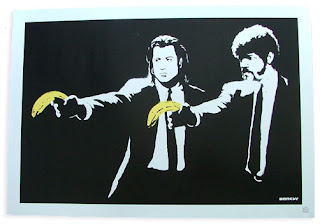
Why did he turn it down? "Because I don't need the money and I don't like children working their fingers to the bone for nothing. I like that Jeremy Hardy line: 'My 11-year-old daughter asked me for a pair of trainers the other day. I said, 'Well, you're 11, make 'em yourself.' I want to avoid that shit if at all possible."
I ask him if you need to be nimble to be a good graffiti artist. "Yeah, it's all part of the job description. Any idiot can get caught. The art to it is not getting picked up for it, and that's the biggest buzz at the end of the day because you could stick all my shit in Tate Modern and have an opening with Tony Blair and Kate Moss on roller blades handing out vol-au-vents and it wouldn't be as exciting as it is when you go out and you paint something big where you shouldn't do. The feeling you get when you sit home on the sofa at the end of that, having a fag and thinking there's no way they're going to rumble me, it's amazing... better than sex, better than drugs, the buzz."

He talks about the fun he had at Glastonbury this year. "The police seemed to feel very relaxed, and they were driving Land Rovers. We found two parked up with the cops out chatting to girls on the main drag and I nearly always carry a can of paint, so I just walked up and did a random swiggle on the side of one, and then handed the can of paint to my friend who wrote 'Hash for cash' on the side of another. By the end of that night, we had done seven police vehicles with aerosol." He says he has been arrested for graffiti in the past, but not in recent years, and never as Banksy.

Was it a tough decision to exhibit in a gallery? No, he says - first of all, this is hardly a posh gallery, it's an old warehouse. Second, without a formal space, how could he possibly display his live sheep, pigs and cows? Actually, he says, graffiti is by definition rather proscriptive. "Most councils are committed to removing offensive graffiti within 24 hours, anything racist, sexist or homophobic, they will send out a team within 24 hours." But somehow if it's "art" in a gallery, the boundaries of taste aren't so rigidly defined.
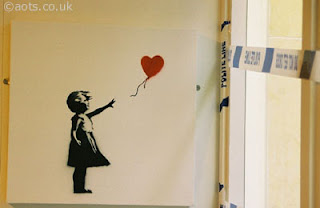
He talks about his stencils of Jewish women at Belsen, daubed in fluorescent lipstick - an image as poignant as it is grotesque. "Now I could never do that on the street because it's just blatantly offensive." But in a gallery he can show it in context. "It's actually based on a diary entry from a colonel who liberated Bergen-Belsen. He described how they liberated this women-only camp, and a box of supplies turned up containing 400 sticks of lipstick, and he went nuts - 'Why are you sending me lipstick?' But he sent it out to the women, and they put it on each other, they did their hair; and because it gave them the will to live it was probably the best thing the soldiers did when they liberated that camp." He tells the story beautifully. "See, that's talking about how the application of paint can make a difference."
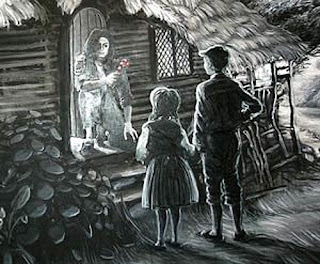
Does he ever see himself becoming part of the art establishment? "I don't know. I wouldn't sell shit to Charles Saatchi. If I sell 55,000 books [he has published two, Existencilism and Banging Your Head Against A Brick Wall] and however many screen prints, I don't need one man to tell me I'm an artist. It's hugely different if people buy it, rather than one fucking Tory punter does. No, I'd never knowingly sell anything to him."
He returns to the subject of the opening night, and talks about it with such excitement. "A part of me wishes I could go because I've put together a really nice setup."
But, he says, it would be too risky. Will his parents be there? He shakes his head. "No. They still don't know what I do." Really, I say, they have no sense of how much you've achieved? "No," he says tenderly. "They think I'm a painter and decorator
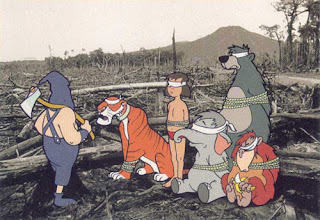
The Art Stunts
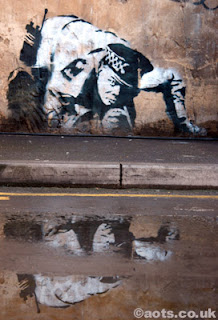
At London zoo, he climbed into the penguin enclosure and painted 'We're bored of fish' in seven foot high letters.
At Bristol Zoo, he left the message 'I want out. This place is too cold. Keeper smells. Boring, boring, boring.' in the elephant enclosure.
In March 2005, he placed subverted artworks in the Museum of Modern Art, Metropolital Museum of Art, the Brooklyn Museum, and the American Museum of Natural History in New York.

He put up a subverted painting in London's Tate Britain gallery.
In May 2005 Banksy's version of a primitive cave painting depicting a human figure hunting wildlife whilst pushing a shopping trolley was found hanging in the British Museum, London. Upon discovery, the museum added it to their permanent collection.
Banksy has sprayed 'This is not a photo opportunity' on certain photograph spots.
In August 2005, Banksy painted nine images on the Isreali West Bank Barrier, including an image of a ladder going up and over the wall and an image of children digging a hole through the wall.
In April 2006, Banksy created a sculpture based on a crumpled red phone box with a pickaxe in its side, apparently bleeding, and placed it in a street in Soho, London.
In June 2006, Banksy created an image of a naked man hanging out of a bedroom window on a wall in central Bristol.

In August/September 2006, Banksy replaced up to 500 copies of Paris Hilton debut CD, "Paris", in 48 different UK record stores with his own cover art and remixes by Danger Mouse. Music tracks were given titles such as "Why am I Famous?", "What Have I Done?" and "What Am I For?". Several copies of the CD were purchased by the public before stores were able to remove them, some going on to be sold for as much as £750 on online auctions. The cover art depicted Paris Hilton digitally altered to appear topless. Other pictures feature her with a dog's head replacing her own, and one of her stepping out of a luxury car, edited to include a group of homeless people, which included the caption "90% of success is just showing up".
In September 2006, Banksy dressed an inflatable doll in the manner of a Guantanamo bay prisoner (orange jumpsuit, black hood, and handcuffs) and then placed the figure within a ride at the Disneyland theme park.
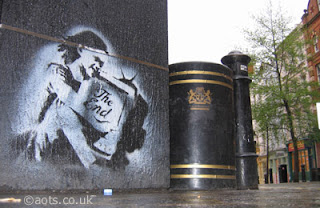
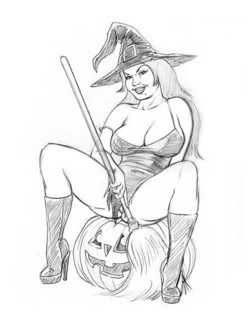
368 comments:
«Oldest ‹Older 401 – 368 of 368Post a Comment